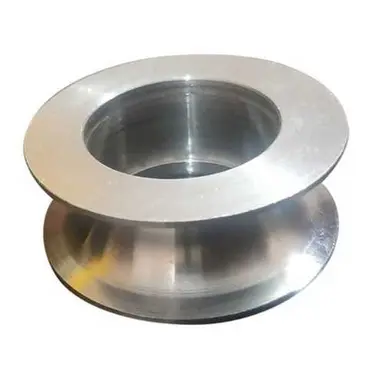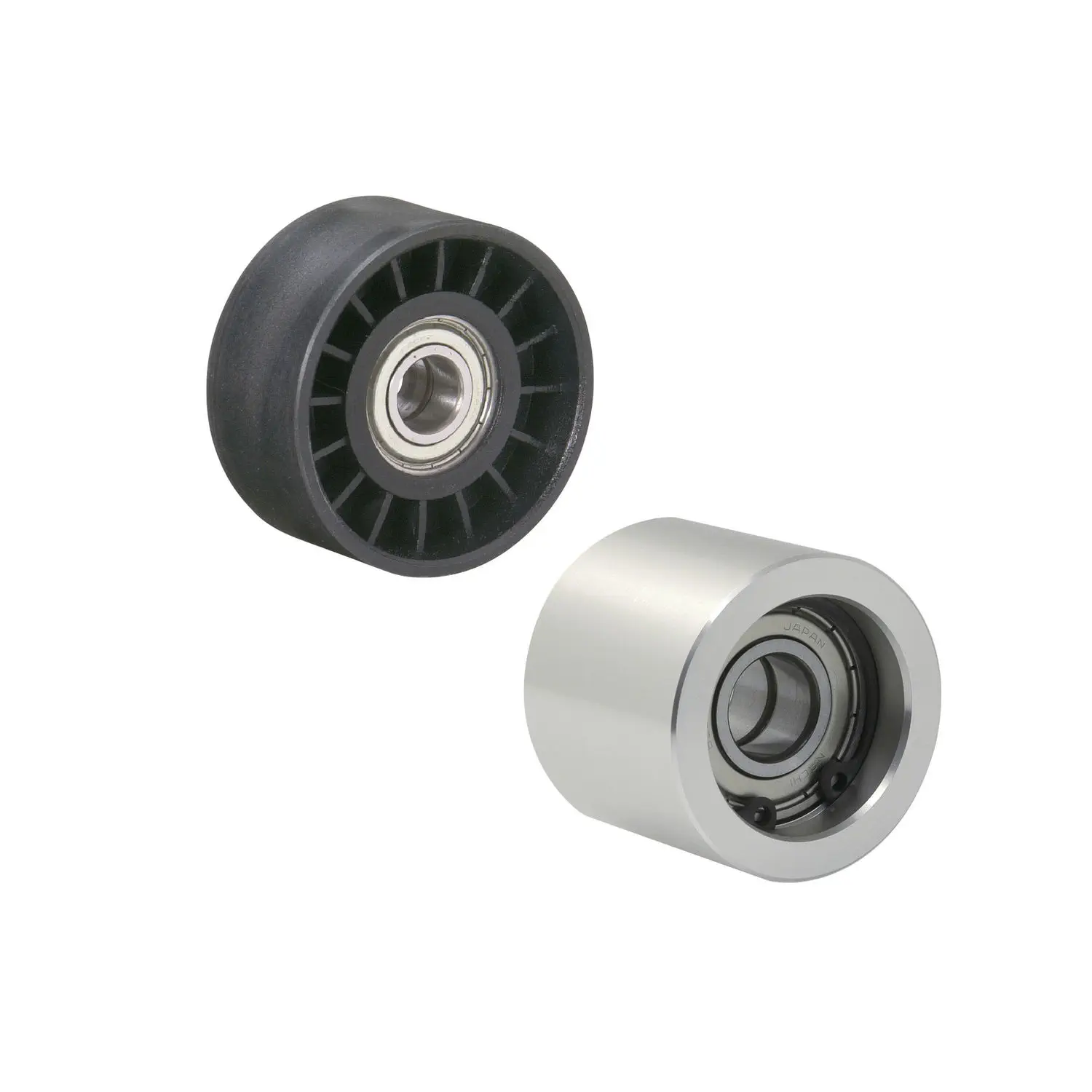Rubber Lagging Rollers
Introduction
A roller pulley, also known as a rubber lagging roller, is an essential component used in various industries for
belt conveyors. It plays a crucial role in maintaining traction, reducing slippage, and ensuring smooth
operation.
What is a Roller Pulley?
A roller pulley is a cylindrical device with a rubber lagging surface that is used to support and guide conveyor
belts. It provides traction and prevents belt slippage, ensuring efficient material transportation.

Advantages of Roller Pulley
- Enhanced Belt Traction: The rubber lagging surface of roller pulleys increases friction, resulting in
improved belt traction and reduced slippage. - Extended Belt Lifespan: By minimizing slippage and reducing wear and tear, roller pulleys help extend the
lifespan of conveyor belts, resulting in cost savings. - Smooth and Efficient Operation: Roller pulleys ensure smooth and efficient material handling, minimizing
downtime and maximizing productivity. - Reduced Maintenance: With their excellent traction capabilities, roller pulleys require less maintenance and
adjustment, saving time and effort. - Noise Reduction: The rubber lagging on roller pulleys helps dampen noise, creating a quieter work
environment.

Difference between a Flat Belt Pulley and a Roller Pulley
While both flat belt pulleys and roller pulleys are used in belt conveyors, there are significant differences
between them:
- A flat belt pulley has a smooth surface, whereas a roller pulley has a rubber lagging surface.
- Flat belt pulleys are suitable for applications with minimal slippage, while roller pulleys are designed to
provide maximum traction. - Roller pulleys can handle heavier loads and are commonly used in industries where high grip is essential.
- Flat belt pulleys are more cost-effective for light-duty applications, while roller pulleys offer better
performance in heavy-duty environments.

Choosing and Customizing the Right Roller Pulley
When selecting or customizing a roller pulley, several parameters and practical considerations should be taken
into account:
- Diameter: The roller pulley diameter should be chosen based on the belt width and the desired belt-to-pulley
contact area. - Material: The selection of roller pulley material depends on factors such as load capacity, belt speed, and
the specific application requirements. - Rubber Lagging Thickness: The thickness of the rubber lagging affects the grip and traction of the roller
pulley. It should be chosen according to the application demands. - Shaft Type: Roller pulleys can have various shaft types, such as keyed, tapered, or hexagonal. The choice
depends on the conveyor system design and installation requirements. - Special Coatings: Depending on the application, roller pulleys can be customized with special coatings such
as ceramic or chrome plating for enhanced durability and performance in challenging environments.

HZPT – Your Reliable Roller Pulley Supplier
At HZPT, we specialize in designing, developing, and manufacturing high-performance roller pulleys. Our wide range
of products and aftermarket automotive parts cater to the diverse needs of our customers. Here’s why you should
choose us:
- Quality Assurance: We prioritize product quality and adhere to stringent quality control measures to ensure
reliable and durable roller pulleys. - Customer-Centric Approach: Our “customer-first” policy drives us to provide excellent service and cater to
individual requirements. - Global Reach: Our products are highly regarded in the European, South American, and Australian markets,
earning the trust of numerous customers. - Competitive Pricing: We offer competitive prices without compromising on the quality of our products.
- Fast Delivery: With a well-stocked warehouse and efficient distribution, we ensure prompt delivery to meet
our customers’ demands.
For all inquiries or to discuss your specific needs, feel free to contact us anytime. We are committed to
providing professional services and meeting your requirements with our dedicated and capable team.